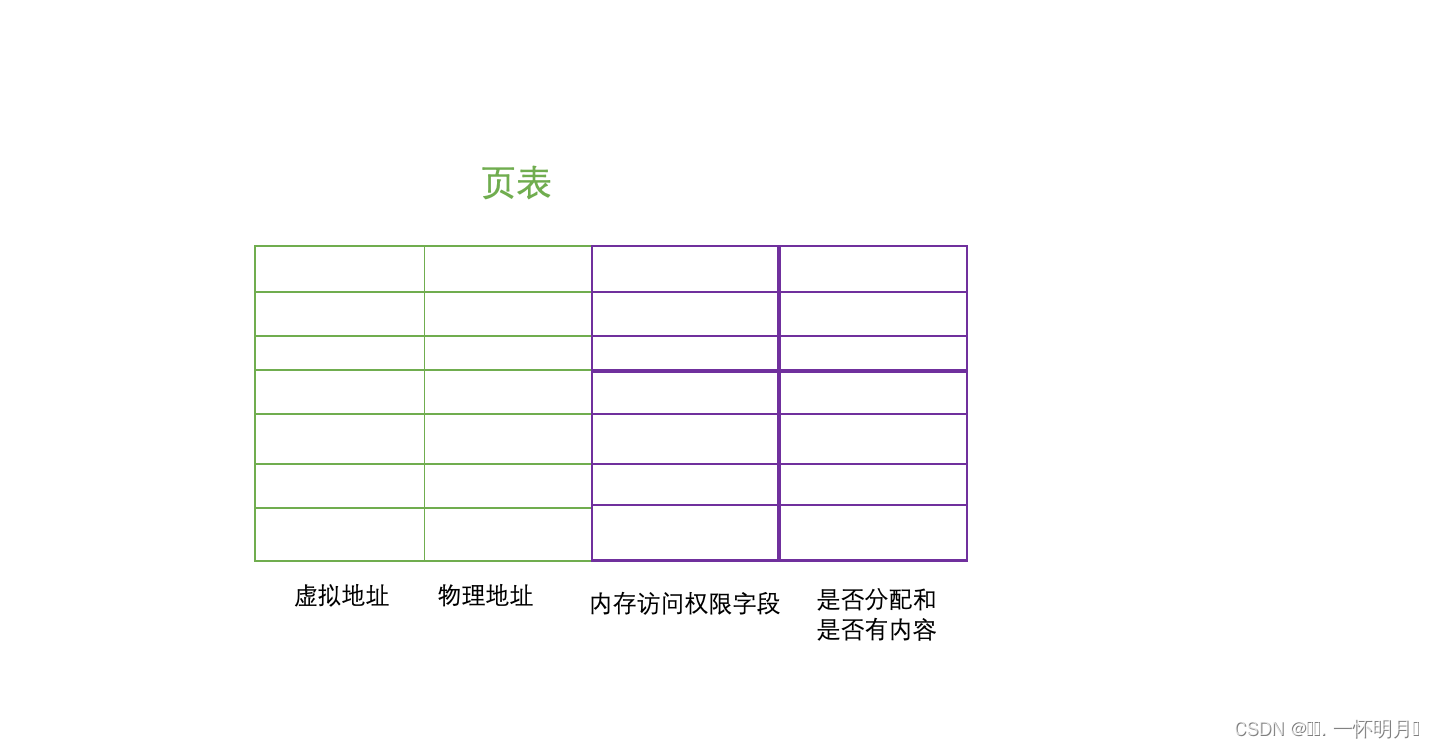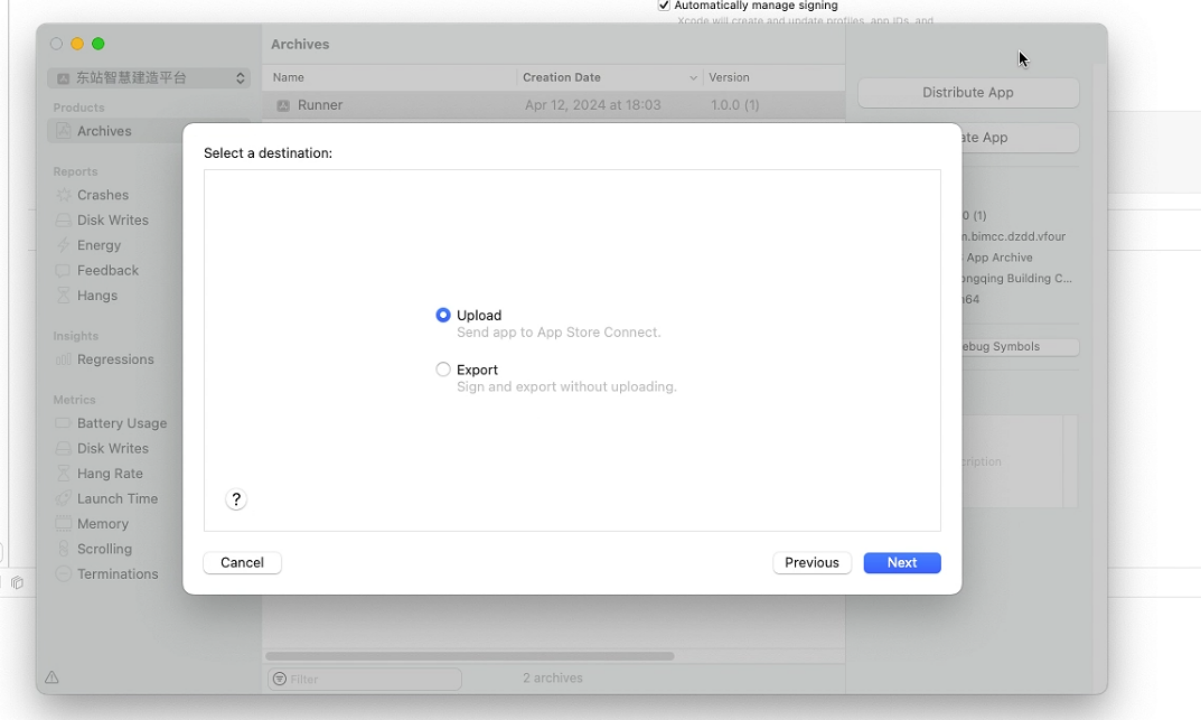1.删除链表中等于给定值 val 的所有结点。
. - 力扣(LeetCode)
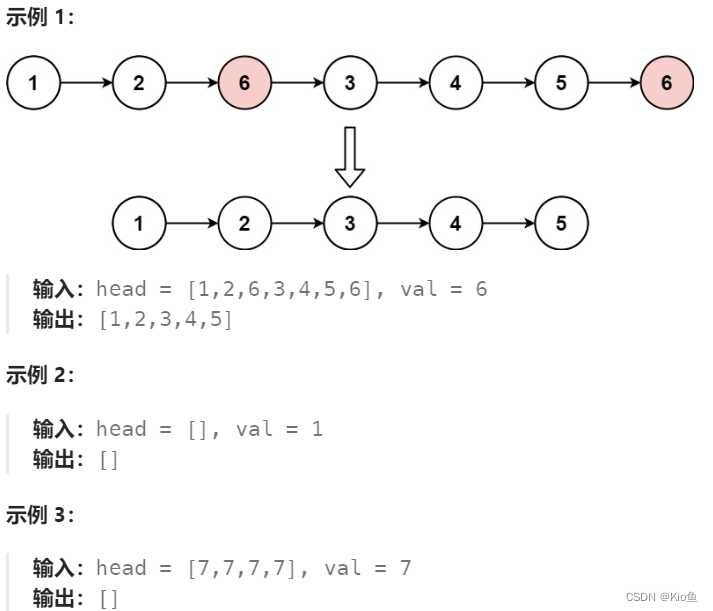
思路一:遍历原链表,将值为val的节点释放掉
/*** Definition for singly-linked list.* struct ListNode {* int val;* struct ListNode *next;* };*/typedef struct ListNode ListNode;
struct ListNode* removeElements(struct ListNode* head, int val) {//创建一个新链表ListNode*newhead,*newtail;newhead=newtail=NULL;ListNode*pcur=head;//用来遍历链表while(pcur){if(pcur->val!=val){if(newhead==NULL)//链表为空{newhead=newtail=pcur;}else //尾插{newtail->next=pcur;newtail=newtail->next;}}pcur=pcur->next;}if(newtail){newtail->next=NULL;}return newhead;}2.反转一个单链表。
. - 力扣(LeetCode)
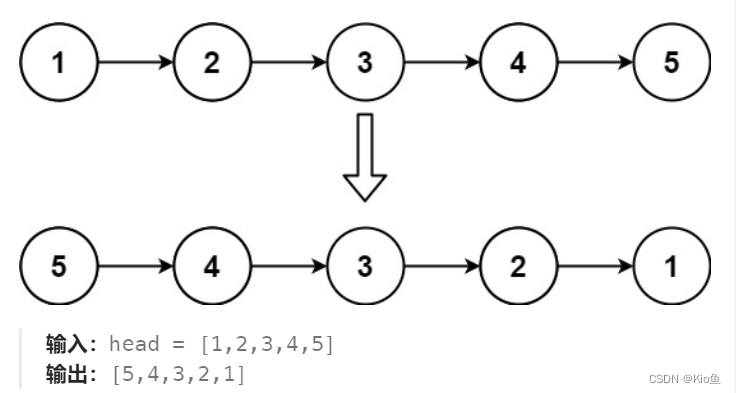
思路1:创建一个新链表,将新节点拿下来头插
思路2:创建三个指针完成链表的翻转


/*** Definition for singly-linked list.* struct ListNode {* int val;* struct ListNode *next;* };*/typedef struct ListNode ListNode;
struct ListNode* reverseList(struct ListNode* head) {if(head==NULL){return NULL;}ListNode*n1,*n2,*n3;n1=NULL;n2=head;n3=head->next;while(n2){n2->next=n1;n1=n2;n2=n3;if(n3){n3=n3->next;}}return n1;
}3.寻找链表的中间节点。
. - 力扣(LeetCode)
思路:使用快慢指针,快指针走2步,慢指针走1步,快指针走到空或者next指针为空时,慢指针指向的就是中间节点
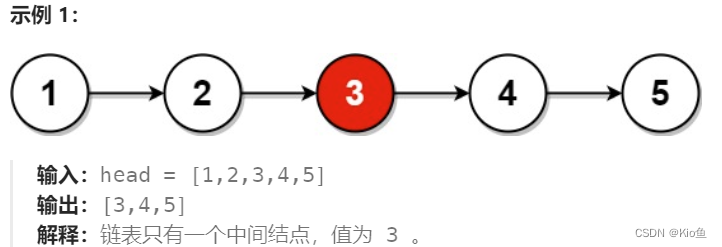

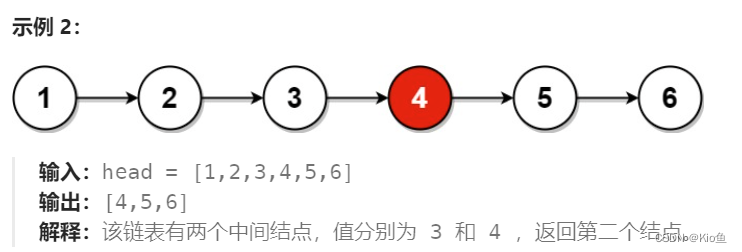

/*** Definition for singly-linked list.* struct ListNode {* int val;* struct ListNode *next;* };*/typedef struct ListNode ListNode;
struct ListNode* middleNode(struct ListNode* head) {//快慢指针ListNode*slow,*fast;slow=head;fast=head;while(fast&&fast->next){slow=slow->next;fast=fast->next->next;}return slow;
}4.输入一个链表,输出该链表中倒数第k个结点。
. - 力扣(LeetCode)

要求空间复杂度为O(1),只能遍历一遍链表
思路:快慢指针,快指针先走k步,然后快慢指针同时走,当快指针走到空时,slow指针指向的就是倒数第k个节点
/*** Definition for singly-linked list.* struct ListNode {* int val;* struct ListNode *next;* };*/typedef struct ListNode ListNode;
int kthToLast(struct ListNode* head, int k){ListNode*fast=head;ListNode*slow=head;while(k--){fast=fast->next;}while(fast){fast=fast->next;slow=slow->next;}return slow->val;
}
5.将两个有序链表合并为一个新的有序链表并返回。
. - 力扣(LeetCode)

思路:创建一个新的链表,遍历原链表,将链表中较小的节点尾插到新链表中
/*** Definition for singly-linked list.* struct ListNode {* int val;* struct ListNode *next;* };*/typedef struct ListNode ListNode;
struct ListNode* mergeTwoLists(struct ListNode* list1, struct ListNode* list2) {if(list1==NULL){return list2;}if(list2==NULL){return list1;}ListNode*newhead,*newtail;newhead=newtail=NULL;ListNode*l1=list1;ListNode*l2=list2;while(l1&&l2){if(l1->val<l2->val){//将l1拿下来尾插if(newhead==NULL){newhead=newtail=l1;}else{newtail->next=l1;newtail=newtail->next;}l1=l1->next;}else{//将l2拿下尾插if(newhead==NULL){newhead=newtail=l2;}else{newtail->next=l2;newtail=newtail->next;}l2=l2->next;}}//跳出循环,要不就是l1走到空,就是l2走到空if(l1)//if(l1!=NULL){newtail->next=l1;}if(l2)//if(l2!=NULL){newtail->next=l2;}return newhead;
}6. 分割链表
链表分割_牛客题霸_牛客网

思路一:在原链表上进行修改,定义pcur从起始位置开始走,若pcur节点小于x,往后走:若pcur节点值大于等于x,尾插在链表之后。
思路二:创建一个新链表,若pcur节点的值小于x,头插在新链表中:若pcur节点的值大于等于x,尾插在新链表中。

/*
struct ListNode {int val;struct ListNode *next;ListNode(int x) : val(x), next(NULL) {}
};*/
class Partition {
public:ListNode* partition(ListNode* pHead, int x) {if(pHead==NULL){return pHead;}//创建两个带头链表struct ListNode*lesshead,*lesstail;struct ListNode*greaterhead,*greatertail;lesshead=lesstail=(struct ListNode*)malloc(sizeof(struct ListNode));greaterhead=greatertail=(struct ListNode*)malloc(sizeof(struct ListNode));//遍历原链表struct ListNode*pcur=pHead;while(pcur){if(pcur->val<x){//尾插到小链表中lesstail->next=pcur;lesstail=lesstail->next;}else {//尾插到大链表中greatertail->next=pcur;greatertail=greatertail->next;}pcur=pcur->next;}greatertail->next=NULL;lesstail->next=greaterhead->next;return lesshead->next;}
};7.判断链表是否为回文结构
链表的回文结构_牛客题霸_牛客网

/*
struct ListNode {int val;struct ListNode *next;ListNode(int x) : val(x), next(NULL) {}
};*/
class PalindromeList {
public://寻找链表的中间节点struct ListNode *middleNode(struct ListNode*head){struct ListNode*slow=head;struct ListNode*fast=head;while(fast&&fast->next){slow=slow->next;fast=fast->next;}return slow;}//将中间节点和之后的节点逆置struct ListNode* reverseList(struct ListNode* head) {struct ListNode*cur=head;struct ListNode*newhead=NULL;while(cur){struct ListNode*next=cur->next;//头插cur->next=newhead;newhead=cur;cur=next;}return newhead;}bool chkPalindrome(ListNode*A){struct ListNode*mid=middleNode(A);struct ListNode*rmid=reverseList(mid);while(A&&rmid){if(A->val!=rmid->val){return false;}A=A->next;rmid=rmid->next;}return true;}
};8.寻找两个链表的公共节点
. - 力扣(LeetCode)


/*** Definition for singly-linked list.* struct ListNode {* int val;* struct ListNode *next;* };*/typedef struct ListNode ListNode;
struct ListNode *getIntersectionNode(struct ListNode *headA, struct ListNode *headB) {ListNode*curA=headA;ListNode*curB=headB;int lenA=1;int lenB=1;while(curA->next){curA=curA->next;lenA++;}while(curB->next){curB=curB->next;lenB++;}//尾节点不相等就不相交if(curA!=curB){return NULL;}//长的先走差距步,再同时走,第一个相等就是交点//假设法int gap=abs(lenA-lenB);ListNode*longlist=headA;ListNode*shortlist=headB;if(lenB>lenA){longlist=headB;shortlist=headA;}while(gap--){longlist=longlist->next;}while(longlist!=shortlist){longlist=longlist->next;shortlist=shortlist->next;}return longlist;}9.随机链表的复制
. - 力扣(LeetCode)
给定一个链表,每个节点包含一个额外增加的随机指针,该指针可以指向链表中的任一节点
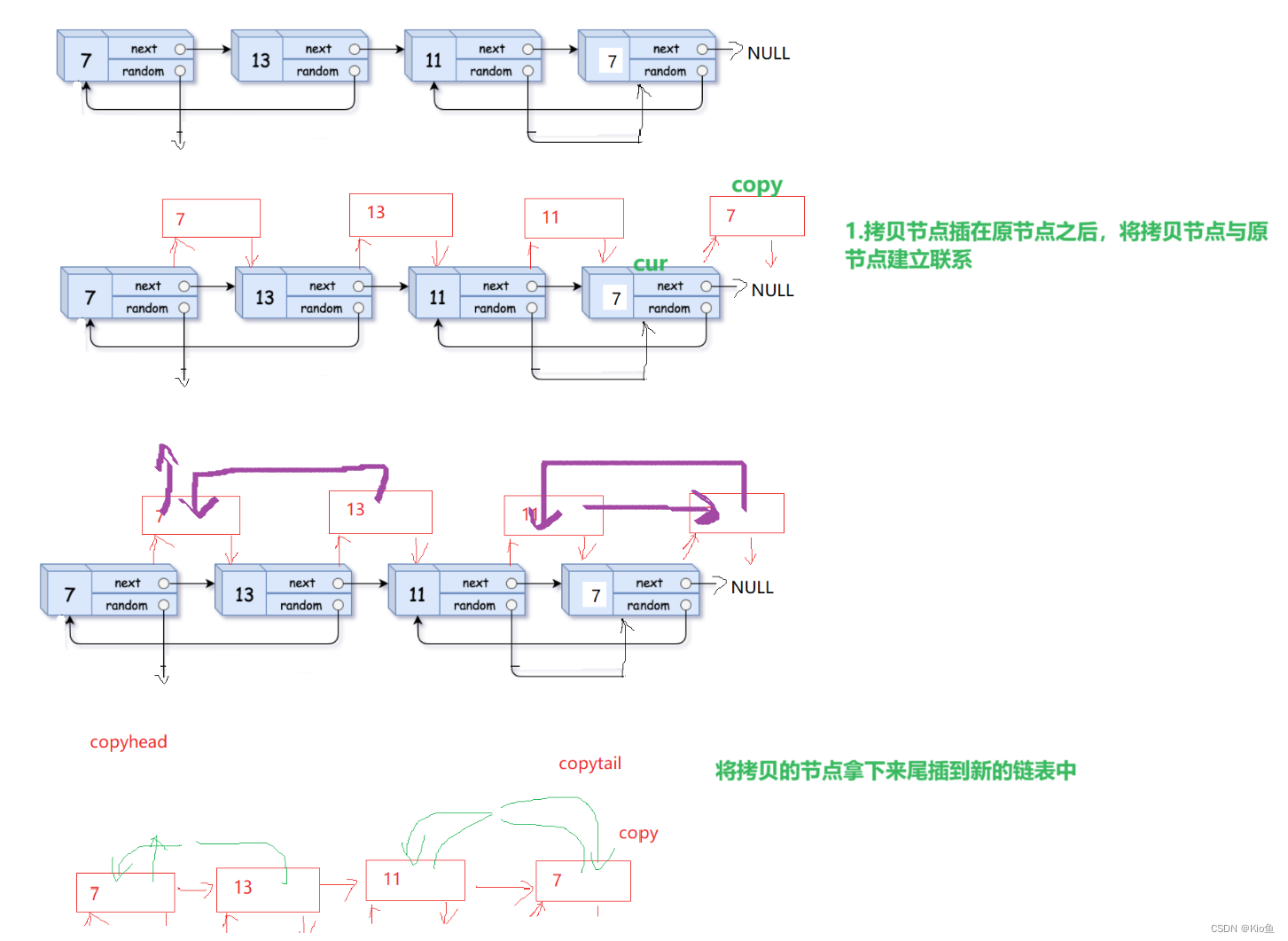
/*** Definition for a Node.* struct Node {* int val;* struct Node *next;* struct Node *random;* };*/
typedef struct Node Node;
struct Node* copyRandomList(struct Node* head) {Node*cur=head;//将拷贝节点插入在原节点的后面while(cur){Node*copy=(Node*)malloc(sizeof(Node));copy->val=cur->val;copy->next=cur->next;cur->next=copy;cur=copy->next;}//控制randomcur=head;while(cur){Node*copy=cur->next;if(cur->random==NULL){copy->random=NULL;}else{copy->random=cur->random->next;}cur=copy->next;}//把拷贝节点取下来尾插成为新链表Node*copyhead=NULL;Node*copytail=NULL;cur=head;while(cur){Node*copy=cur->next;Node*next=copy->next;if(copyhead==NULL){copyhead=copytail=copy;}else{copytail->next=copy;copytail=copytail->next;}cur=next;}return copyhead;
}
